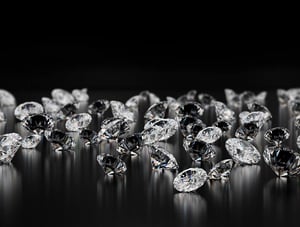Very small synthetic diamonds are also bendable and this flexibility opens the doors to countless new applications in the field of optics, physics and engineering. Bendable diamonds were created by a multidisciplinary team involving the carbon research centers of the Massachusetts Institute of Technology in Boston (USA) and two universities in Hong Kong, with the coordination of Unist, the Ulsan National Institute of Science and Technology of Ulsan, in South Korea.
As reported in the journal Science, researchers made a film (a thin layer) of carbon (the material that diamonds are made of) and then, using very sophisticated techniques, deposited it on a sublayer of silicone, through a controlled chemical evaporation process. At the end of this process nano-needles with a diameter of approximately 300 nanometers, either individually or assembled in multiple structures (one nanometer is equal to a billionth of a meter) were created. However, what was more important, and what had not been achieved up to then, was that these particular nano-needles were able to take a tensile strain of up to 9% and, in several cases, also up to 12%. The tensile strain capacity of natural diamonds, on the other hand, has always been below 1%, because they are fragile and, if they are put under pressure and stretched, they break (something that has always limited their use).
Why do the nano-needles made by the multidisciplinary team have this unprecedented elasticity? Probably – write the researchers – due to the almost total absence of defects, their very small size and particularly smooth surfaces.
The possibility of uniting the extraordinary quality of diamonds (outstanding thermic conductivity, high chemical resistance and high transparency) with a force that natural diamonds do not have, has led to a wide range of uses, in both industry and for research purposes: such as, for example, the storage of computer data, biosensors and diagnostic imaging techniques, but also for the delivery of drugs (several experiments have shown that certain types of chemotherapy are absorbed better by the patient and are more effective, if combined with the presence of nano-diamonds).

